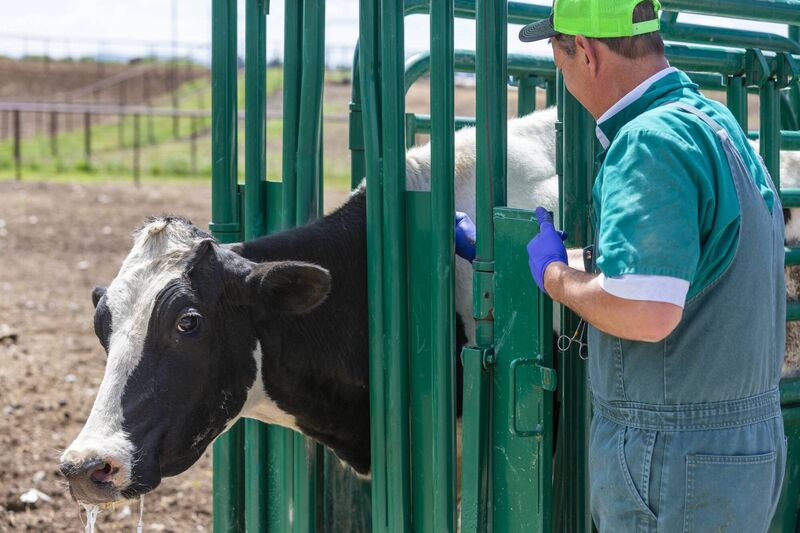TAMS 3 guide: What’s eligible and how to make the most of your grant

The Solar Capital Investment Scheme has a 60% grant rate and its own independent ceiling.
More than €70m has already issued to farmers under the Targeted Agriculture Modernisation Scheme (TAMS 3) grants for farm buildings and equipment.
Agriculture minister Martin Heydon has said it is a demand-led scheme with a defined budgetary allocation up to the end of 2027, and it may be necessary to limit the number of approved applications per tranche going forward, by applying ranking and selection criteria, including for the upcoming tranche 9, which opened on June 7 and will close on September 6.
TAMS 3 includes 12 grant schemes, said Teagasc scheme support specialist Seamus Nolan in a recent Beef Edge podcast.
He said TAMS applications are done online. Application tranches are generally of three months' duration.
“For fixed investments, you cannot start the investment until you have your approval. For mobile investments, you can carry out the investment and get the equipment once the application is actually submitted,” Mr Nolan explained.
“There are different payment ceilings, and some schemes have their own individual investment ceiling.
.
"The Nutrient Storage Scheme has its own investment ceiling. For some of the other schemes, the likes of the Farm Safety Scheme, the Animal Welfare and Nutrient Storage Scheme, Young Farmer Scheme, and Women Farmer Scheme, they have a combined ceiling, so if you spend, say, €20,000 under the Farm Safety Scheme, and you’re an individual, your overall ceiling is €90,000.
"That means you only have €70,000 left then to apply under the Animal Welfare and Nutrient Storage Scheme.
"An individual has a ceiling of €90,000 for these schemes. A company is the same as an individual.
"In order to get the enhanced ceiling of €160,000, you have to be a Registered Farm Partnership,” Mr Nolan explained.
“A joint herd number would only be eligible for an individual ceiling of €90,000,” he confirmed.

“The Farm Safety Scheme is funded at 60%. Animal handling facilities, both fixed and mobile, are available under that, at 60%. So if you had a rented farm, you could apply for mobile handling equipment, a mobile crush and mobile penning.
"If it’s an owned or leased block, and you want to put a fixed investment on it, you can apply for a fixed animal enclosure and crush, and you can also get associated farm safety elements to go with it.
“One of the few fixed investments that the department does not look for planning permission for is the animal enclosure and crush. They don’t look for that at application stage, but what they do say is that if an issue turns up in relation to planning, for example, someone objects to it at the claim stage, they will look for planning at that stage.”
Replacement of slats is eligible under the 60% Farm Safety Scheme as well.
“If you have old single slats or damaged gang slats or manhole covers, you can apply to get those replaced under the 60% grant rate. It’s important to remember that it’s a fixed investment,” Mr Nolan said.
Farmers must receive approval before they can purchase new slats to replace those that are broken.
“You will not get TAMS for any investment associated with a building that has an internal agitation point. If you have an internal agitation point in a shed, you won’t get the grant to replace the slats in it. You can get a grant to extend the tank outside the shed, to bring out the agitation point or to put in a circulation system or an aeration system to agitate it.
"But under no circumstances will you get a grant where there’s an internal agitation point in a shed, or in a shed that has a common air space,” Mr Nolan said.
The Department of Agriculture and Teagasc strongly advise against using internal agitation points due to the risk of slurry gas buildup, which can be fatal.
TAMS funding can be applied for calf housing and certain equipment. “The computerised calf feeding is there, and also the milk carts are there. They are available to the ordinary farmer at 40% under the Animal Welfare and Nutrient Storage Scheme, but for the young farmer, they’re available at 60%,” Mr Nolan said.
“If you apply under the wrong scheme for the investment, for the wrong rate, it can’t be changed subsequently. You have to reapply,” he warned.
“Earlier this year, the DAFM introduced the Nutrient Storage Scheme. That’s an additional scheme, with its own independent ceiling of €90,000 for an individual, or €160,000 for a Registered Farm Partnership. That’s at 60%.”
For this additional storage capacity scheme, some of the main investments include a manure pit; a mass concrete tank, including precast tanks; circular slurry stores; or a geo-membrane lined store.
A farmer building a new slatted shed can avail of 60% grant aid for the tank and still have a €90,000 investment ceiling available to put a roof in place over the tank, since the Nutrient Storage Scheme has its own independent ceiling.
The Solar Capital Investment Scheme has a 60% grant rate and its own independent ceiling. In dry stock farms, the energy consumed can be used in one dwelling.
“The size of the system that you can put in is determined by your energy usage in the previous 12 months,” Mr Nolan said.
The solar panels must be on agricultural buildings or ground-mounted, but the electricity can be consumed by the dwelling house.
“You can get a grant under the Animal Welfare and Nutrient Storage Scheme, the Young Farmer or Women Farmer Schemes, for solar electric fences. There are solar water pumps available also under those schemes. They are outside the Solar Capital Investment Scheme.”
The costings are based on a power take-off (PTO) generator. You can get a diesel or a petrol-powered one, Mr Nolan said.
Of the 45,274 applications received across the first eight tranches of TAMS 3, 30,263 applicants were approved to proceed with their investments. Applicants withdrew 892 applications, and 2,692 were rejected due to ineligibility under the terms and conditions of the scheme.
Tranche 8 closed on June 6, with 5,364 applications received and currently being processed.










